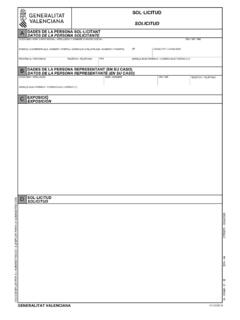Transcription of Reporting guidelines for the BIS international banking ...
1 Reporting guidelines for the BIS international banking statistics Monetary and Economic Department July 2019. Queries about the guidelines and suggestions for improvements may be addressed to: for the locational banking statistics, and for the consolidated banking statistics, Bank for international Settlements 2019. All rights reserved. Brief excerpts may be reproduced or translated provided the source is stated. ISBN 978-92-9259-280-6 (online). Reporting guidelines for the BIS international banking statistics Contents1. Reporting guidelines for the BIS international banking statistics .. 1. Conventions used in this publication .. 3. List of abbreviations .. 4. Currency codes .. 4. 1. Introduction .. 5. BIS international banking statistics .. 5. Reporting 5. Enhancements over the decades .. 6. 1960s and 6. 1980s and 6. 2000s and beyond .. 7. Changes to the Reporting guidelines .
2 7. 2. LBS: definitions and coverage .. 9. Reporting population .. 9. Types of Reporting bank .. 9. Nationality of Reporting banks .. 10. Business covered .. 11. 11. Valuation and netting .. 12. Currency of 13. Counterparties .. 14. Country allocation .. 15. Sector allocation .. 16. 3. LBS: specific Reporting requirements .. 18. Groupings of Reporting 18. Breakdowns by country, sector, currency and 19. 1. This version of the guidelines was prepared under the direction of Philip Wooldridge, Head of international banking and Financial Statistics (2012 19), and drafted by Koon Goh, Senior Statistical Analyst. Many staff at the BIS and Reporting authorities contributed to the guidelines . Reporting guidelines for the BIS international banking statistics 1. 4. CBS: definitions and coverage .. 21. Reporting population .. 22. Domestic banking groups .. 22. Foreign banks .. 22. Reporting nationality in CBS.
3 23. Business on an immediate counterparty basis .. 24. Assets .. 24. Liabilities and equity .. 25. Risk transfers .. 26. Criteria for recognising risk transfers .. 26. Instruments recognised as collateral .. 27. Business on a guarantor 27. Country allocation .. 29. Distinguishing local business from cross border business .. 29. Sector allocation .. 30. 5. CBS: specific Reporting requirements .. 32. CBS on an immediate counterparty basis .. 32. Items not allocated by counterparty .. 32. Items allocated by counterparty .. 32. CBS on a guarantor basis .. 34. 6. Key differences between the LBS and the CBS .. 35. Trustee and other off-balance sheet business .. 35. Short sales of securities .. 35. Netting of derivatives .. 35. Sector of counterparty .. 35. 7. Technical requirements for submitting LBS and CBS to the BIS .. 37. Unit and frequency of Reporting .. 37. Confidentiality codes.
4 37. Breaks-in-series .. 38. Data quality .. 39. 8. Dissemination .. 40. Adjusted changes .. 40. Annual growth 40. Reporting guidelines for the BIS international banking statistics 2. Revision policy .. 40. 9. References .. 41. Annex A: Approaches to the perimeter of consolidation .. 42. Annex B: Reporting of derivatives in the CBS .. 43. Annex C: Examples of bank type and nationality .. 44. Annex D: Examples of how to report different types of claim in the CBS .. 46. Annex E: Frequently asked questions .. 49. Annex F: Questions about LBS- Reporting practices .. 54. Annex G: Questions about CBS- Reporting practices .. 57. Conventions used in this publication .. not available . not applicable nil or negligible The term country as used in this publication also covers territorial entities that are not states as understood by international law and practice but for which data are separately and independently maintained.
5 Reporting guidelines for the BIS international banking statistics 3. List of abbreviations BIS Bank for international Settlements BoP balance of payments BPM6 Balance of Payments and international Investment Position Manual sixth edition CBS consolidated banking statistics CBSI CBS on an immediate counterparty basis CBSG CBS on a guarantor basis CGFS Committee on the Global Financial System ECB European Central Bank EFSF European Financial Stability Facility EFSM European Financial Stabilisation Mechanism EMEs emerging market economies ESM European Stability Mechanism EU European Union FC foreign currency FX foreign exchange G-SIB global systemically important bank IBS international banking statistics IMF international Monetary Fund LBS locational banking statistics LBSR LBS by residence LBSN LBS by nationality LC local currency mn millions NPISHs non-profit institutions serving households OECD Organisation for Economic Co-operation and
6 Development SAR Special Administrative Region SNA 2008 System of National Accounts 2008. Currency codes AUD Australian dollar CAD Canadian dollar CHF Swiss franc EUR euro GBP pound sterling JPY Japanese yen SDR Special Drawing Right USD US dollar Reporting guidelines for the BIS international banking statistics 4. 1. Introduction BIS international banking statistics Under the auspices of the Committee on the Global Financial System (CGFS) and in cooperation with central banks and other national authorities worldwide, the Bank for international Settlements (BIS). compiles and publishes statistics on the international business of banks. 2 The BIS international banking statistics (IBS) comprise two data sets: The locational banking statistics (LBS), which provide information about the currency composition of banks' balance sheets and the geographical distribution of their counterparties.
7 The LBS. capture the outstanding financial assets and liabilities of internationally active banks located in Reporting countries against counterparties residing in more than 200 countries. Banks record their positions on an unconsolidated, standalone basis, including intragroup positions between entities that are part of the same banking group as well as inter-office positions with non-resident branches. The LBS are compiled according to principles and concepts that are consistent with balance of payments (BoP) and international investment position statistics. The consolidated banking statistics (CBS), which capture the worldwide consolidated positions of internationally active banking groups headquartered in Reporting countries. The CBS include the business of banks' foreign affiliates but exclude intragroup positions, similarly to the consolidation approach followed by banking supervisors.
8 The LBS and CBS are reported to the BIS at a country rather than individual bank level. Banks submit data to an official authority in their country, usually the central bank, which then aggregates the data and submits country-level aggregates to the BIS for global aggregations, analysis and publication. The LBS and CBS are best suited for macro analysis of economic and financial stability issues. They can help monitor the evolution of the financial landscape and reveal emerging vulnerabilities (BIS. (2015)). Within a multipronged approach to systemic risk assessment, the LBS and CBS serve as a starting point for a fuller analysis based on more detailed data. Reporting countries The term Reporting countries refers to countries with an authority that participates in the collection of the LBS or CBS. The number of Reporting countries varies by data set and year. The number of LBS- Reporting countries increased from 15 in 1977 to 28 in 2000 and 47 in 2016.
9 The number of CBS- Reporting countries increased from 15 in 1983 to 23 in 2000 and 31 in 2011. Countries with authorities that participate in the LBS and CBS are listed on the BIS website ( ). The IBS aim to provide comprehensive information about the business of internationally active banks. Owing to the concentration of international banking business, this aim can be satisfied through the participation of countries and financial centres with substantial cross-border banking business; it is not necessary to seek the participation of all countries in the world. The BIS, in consultation with Reporting countries and the CGFS, invites new authorities to participate in the LBS or CBS when the international business of banks in their country becomes substantial. 2. The CGFS monitors financial market developments for central bank Governors and analyses the implications for financial stability and central bank policy ( ).
10 The CGFS comprises over 20 central banks and is located at the BIS. It was established in 1971, and until 1999 was known as the Euro-currency Standing Committee. Reporting guidelines for the BIS international banking statistics 5. The share of banks in LBS- Reporting countries in the estimated cross-border financial assets of all banks worldwide rose from about 50% in 1977 to 90% in 2000 and 93% in 2016 (BIS (2018)). Although the number of CBS- Reporting countries is less than the number of LBS- Reporting countries, the coverage is not necessarily lower because, in the CBS, banks submit data on a consolidated group basis. Therefore the CBS capture not only the balance sheets of banks located in the Reporting countries but also the balance sheets of their foreign affiliates around the world. The Reporting guidelines distinguish between data that authorities are required to report to meet their obligations as a Reporting country and data that authorities are encouraged to report on a best effort basis to enhance the analytical usefulness of the data set.

















